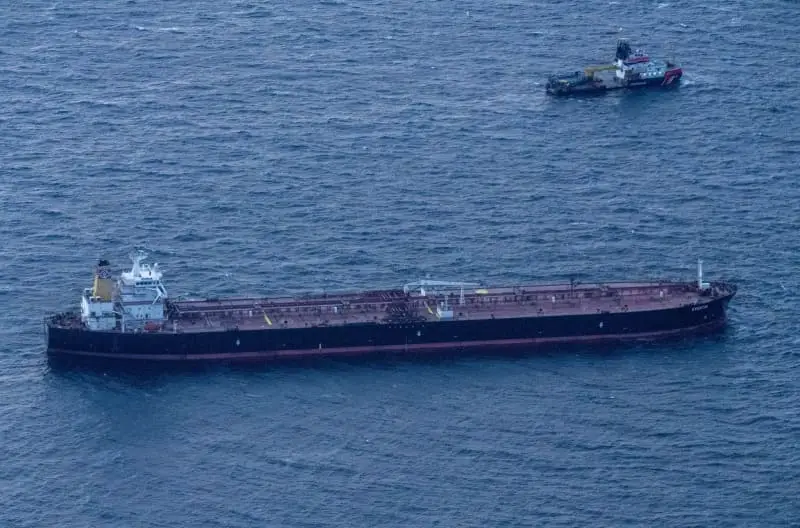They say walking is the best medicine and you could spend months walking off your troubles along the sentier des douaniers (customs officers’ path), which winds for more than 1,240 miles (2,000km) around the bays and headlands of the Breton coast. However, me and my perennial walking companion, an Irishman who lives in Bath, settled for a five-day, 55-mile stretch along the southern Crozon peninsula.
As we agreed not to fly, he took the train to Plymouth, the ferry to Roscoff and buses from there, while I took the train from Barcelona and, after a night in Paris, another train to Quimper and a bus to our starting point at Camaret-sur-Mer.
Much has been written about the physical and therapeutic benefits of walking but there’s a big difference between going solo and walking with someone else. You have to be compatible physically, obviously, but just as important is understanding that, to benefit from the Zen of walking, you need periods of silence.
On our annual walks, the Irishman and I have reached an understanding of when to walk and talk and when to shut it.
Camaret is a pretty fishing village that these days lives as much off tourism and pleasure boating as fish. There are bars and the ubiquitous crêperies along the waterfront, as well as an excellent restaurant in the Hotel de France.
On day one we had the option of a shorter (nine miles) or longer (13 miles) route. We opted for the shorter walk to Morgat, another fishing port but with swimming beaches where there are kayaks and paddleboards for hire.
The first day takes you through woodland before you follow a narrow clifftop path across moorland brightened by yellow gorse, pink clover and the occasional purple orchid. The path is accessible for anyone of any age who is reasonably fit and has a decent pair of walking boots. Much of the landscape is scrub, steep cliffs and sandy coves, reminiscent of Cornwall with a touch of Donegal.
This part of Lower Brittany is where you are most likely to hear people speak Breton, a Celtic language closely related to Cornish and Welsh. It was once the language of the wealthy, then the poor and now mainly older people. It is classified as “severely endangered” by Unesco.
Some people may get a kick out of tramping with a heavy pack on their back but we’re past all that, so we organised our trip through Normandie Rando, a hiking and biking specialist who provide the itinerary, make hotel bookings and arrange luggage transfers. When we arrived at Morgat our bags had been delivered to the small hotel. In this part of the world the health department’s vehicles double as taxis so our bags generally arrived by ambulance.
There are two decent fish restaurants in Morgat as well as a pizzeria. This coast is oyster and lobster country, not to mention moules-frites, while vegetarians should head to the nearest crêperie. They are also fond of butter and there are numerous biscuiteries where they make shortbread-like biscuits and the renowned Breton cake.
Morgat served as base camp for the first three nights and the next two days’ walks took the form of loops. On day two we opted for the longer loop (13 miles) in order to reach the Cap de la Chèvre at the tip of the peninsula. Much of the first part of the walk is along the GR34 through wooded country above the sea and the first few miles are probably the toughest of the five days, with quite steep climbs and descents until you get past the Pointe de St-Hernot and the Île Vièrge.
Be prepared for all weathers as it’s changeable. A three-minute squall of horizontal rain at Cap de la Chèvre was all it took to give us a good soaking, but it was worth it for the view when the sun came out. The path then continues along the clifftop as you approach La Palue, considered the best of Brittany’s surfing beaches. High tide is the best time to catch good waves.
The beach is not very accessible and there are no beach bars nor a webcam, all of which is part of its charm, but you’ll need to bring your own boards and other supplies. It’s not an ideal beach for swimming.
Day three was a 10-mile loop of the same peninsula, but this time cutting across inland to the coast at Lostmarc’h where you once again pick up the GR34 along a delightful clifftop walk bright with wildflowers towards the Château de Dinan. The path then cuts back inland through the village of Dinan and back to Morgat. The following day you have the option of a 13-mile walk from Telgruc-sur-Mer or eight miles from Saint-Nic (Sant Vig in Breton). The taxi (ambulance) dropped us at Saint-Nic before taking our bags on to the hotel at Trefeuntec.
The late gothic church in the village, with its elegant narrow tower, is worth a visit before setting off in the direction of the sea. Depending on the tide, you can walk along or above the beach of La Lieue de Grève until you arrive at the beautiful headland of Pointe de Tal ar Grip after which another long beach, Sainte-Anne, leads you to Trefeuntec. All in all, an easy day’s walking.
The fifth and final day takes you on an eight-mile path along the cliffs to Douarnenez, the last stretch of which passes through the lovely nature reserve of Les Plomarc’h. Douarnenez is a sizeable town with plenty of bars and restaurants along the banks of the Pouldavid River. It was once a major sardine cannery, although its heyday is long past. In 1921 it became one of the first towns in France to elect a communist mayor.
And so from Douarnenez it was on to Quimper and our separate ways, west to Roscoff and east to Paris. Until next year.
The trip was supported by Normandie Rando, which offers self-guided hiking and cycling holidays, and costs €660pp, including six nights in hotels, breakfast and luggage transfers.







